
9 Iconic Foods of the West
From shrimp cocktails to chimichangas, these dishes reveal stories of place and people.
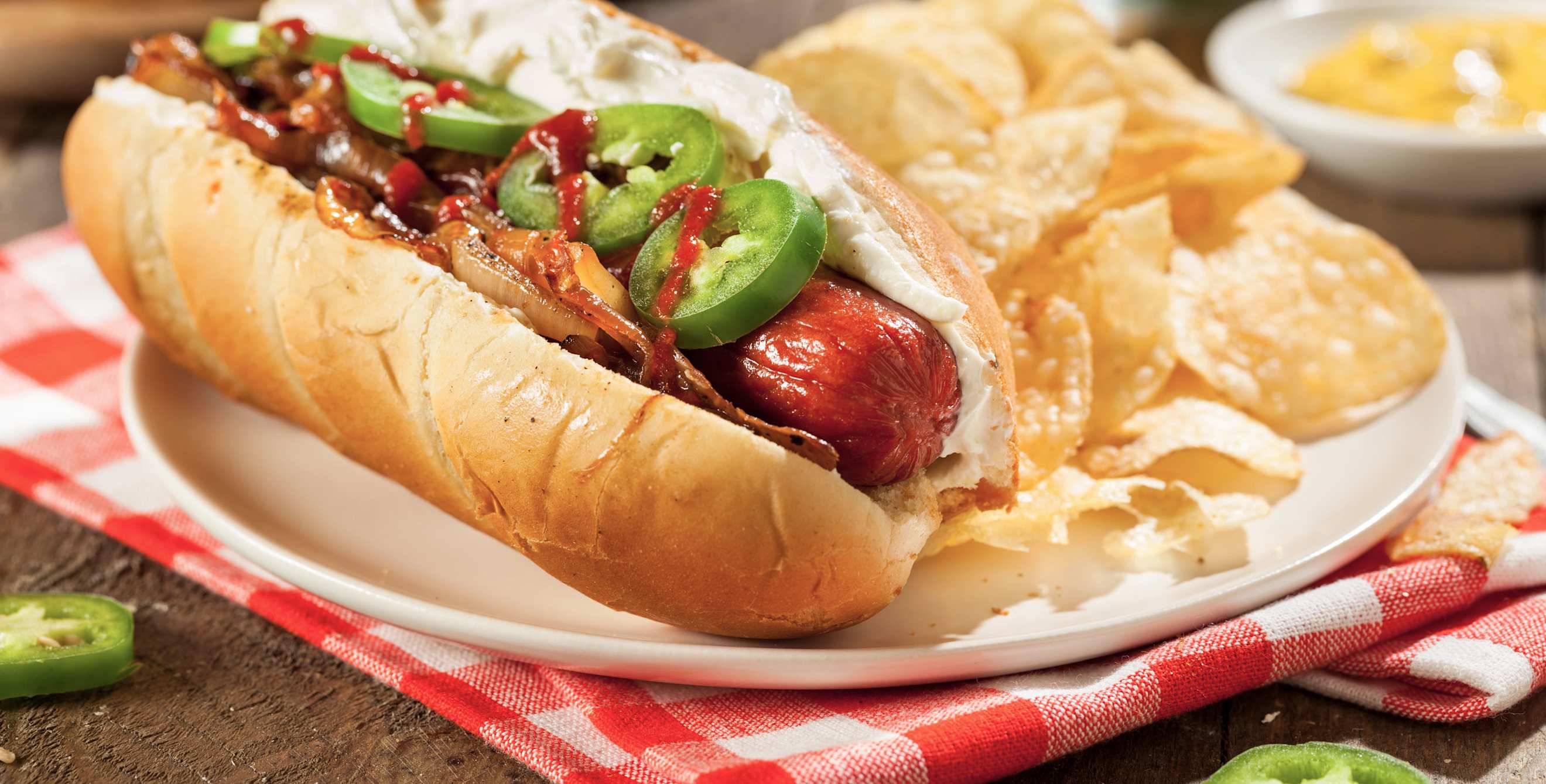
The spirit and history of the West shine through its many classic dishes.
Some of these food traditions date back thousands of years, when the Tlingit could be found grilling salmon over the fire on cedar planks in what is now known as Alaska. Some took a long journey to get here, such as sopaipillas traveling from the Iberian Peninsula to Atlantic shores and, eventually, to the state that’s known for them, New Mexico. Others, such as the cream cheese–slathered Seattle hot dog, are more modern inventions.
Many dishes have clear origin stories, while some are fuzzy or disputed. Travel back in time and discover the histories of these regional treats, plus the best spots to eat them now.
Seattle Dog, Washington
The unlikely inventor of the Seattle dog was Hadley Long, a vegetarian who sold bagels from a cart at Pioneer Square. Positioned between two of the city’s oldest bars, he finally gave in to requests from drinkers searching for a meaty snack. In 1989, he put a hot dog onto a bialy-stick roll and slathered it on both sides with cream cheese he already had on hand. He called them Hadley’s Bagel Dogs, and they grew up alongside grunge, frequently on offer outside venues where the likes of Alice in Chains, Pearl Jam, and Nirvana played.
You can find them on the street (a cart named Secret Sausage is set up not far from one of grunge’s birthplaces, the Moore Theater) and at sporting events. But they’ve also gone upscale, with James Beard award–winning chef Renée Erickson offering her take at the cocktail lounge Deep Dive. These show dogs are garnished with whipped cream cheese topped with pickled vegetables and salmon roe caviar. A topping that’s frowned upon locally? Ketchup.
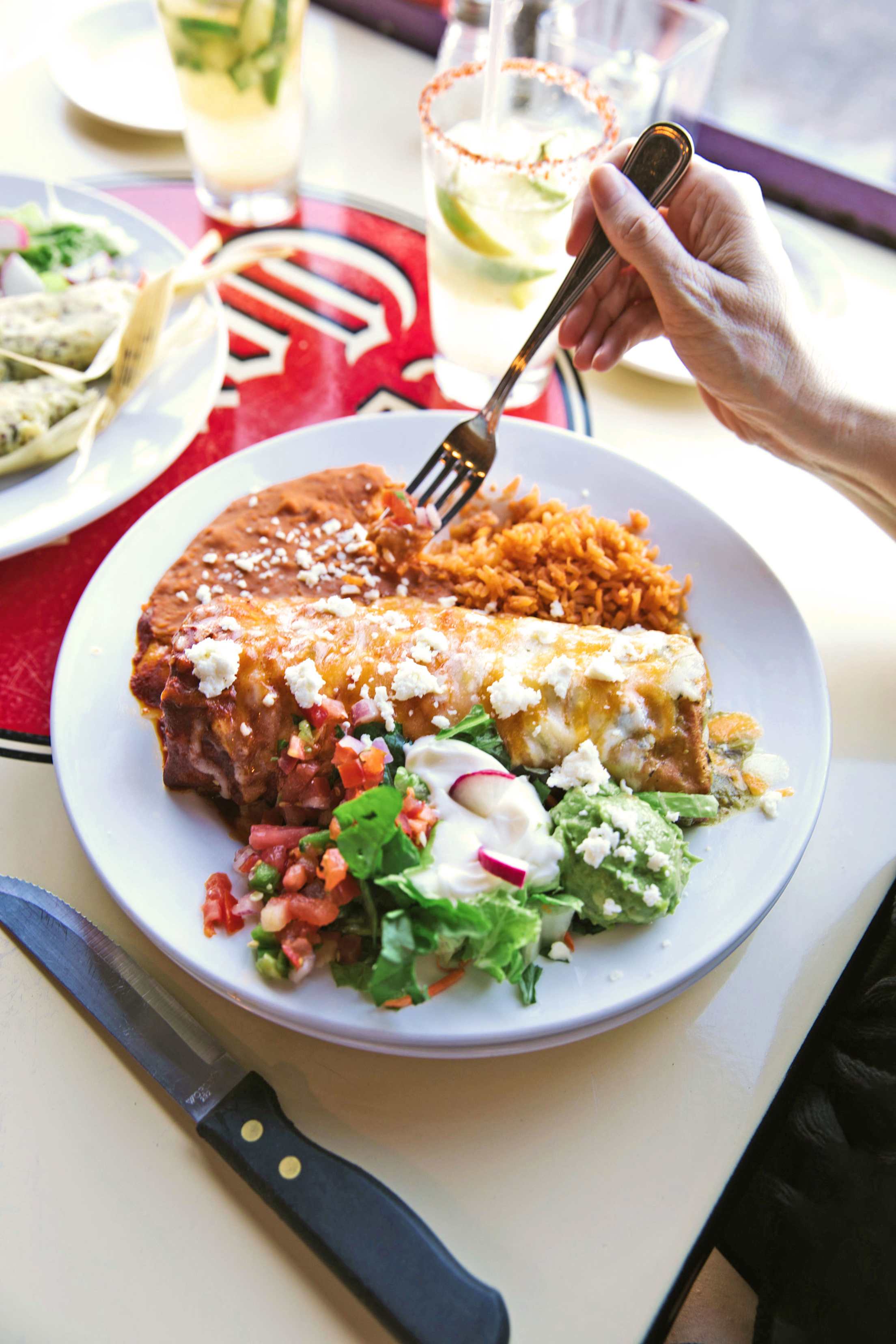
Chimichanga, Arizona
The daughter of a stonemason who came to Tucson, Arizona, to help build St. Augustine Cathedral, Monica Flin in 1922 opened El Charro, which is now the oldest Mexican restaurant in the U.S. run by the same family. It was rare for a woman to run her own restaurant then and rarer still for her to have made culinary history. The story goes that she accidentally dropped a burrito in hot oil, and because she was in a kitchen filled with her nieces and nephews, instead of cursing in front of the children, she exclaimed, “Chimichanga!”
Others have also laid claim to inventing the dish: Woody Johnson of Phoenix’s Macayo Mexican Kitchen and Diego “Al” Valenzuela of Tucson’s now-defunct Gordo’s. Valenzuela’s TV ads helped popularize the dish with the locally famous tagline, “Do you like chimichangas, do you really like chimichangas?”
After her death in the 1970s, Tia Monica (as Flin was widely known) left the business to her great-grandniece, Carlotta Flores. Tucson food writer Rita Connelly calls El Charro’s Carne Seca Chimi “a wonder to behold” with its strips of dried flank steak made in-house. Fittingly, the restaurant’s downtown location occupies the family’s former home with stonework carved by Flin’s father.
Hangtown Fry, California
There’s a dummy hanging by its neck from an old commercial building on Main Street in Placerville, a former mining town in California’s Sierra foothills. The effigy pays homage to an incident in 1849—after gold was discovered in the nearby American River—when three men accused of robbery and murder were hanged. The town became known as “Hangtown.”
Placerville’s nickname has another memorial apart from the mannequin flopping in the wind: a dish known as the Hangtown fry, an omelet comprised of eggs, oysters, and bacon. Co-owner of beloved local bookstore The Bookery, Nancy Dunk says the legend goes that a miner had been hungry for months, found gold, brought it to a hotel, and said, ‘I’ll have the most expensive dish you can offer.’
Try a cheese-topped version at local diner Buttercup Pantry, if you’re not dissuaded by the menu disclaimer: “Eat this at your own risk. If you don’t like, you have been warned. Some do and some don’t.” Another take—with gruyere, green onions, and crispy fried oysters—can be found at San Francisco’s historic Sam’s Grill. Its owner Peter Quartaroli passes along another, less widely accepted origin story that the dish was the last meal requested by a man about to be hanged. This was an ingenious request: The ingredients were hard to procure, so his execution was delayed.
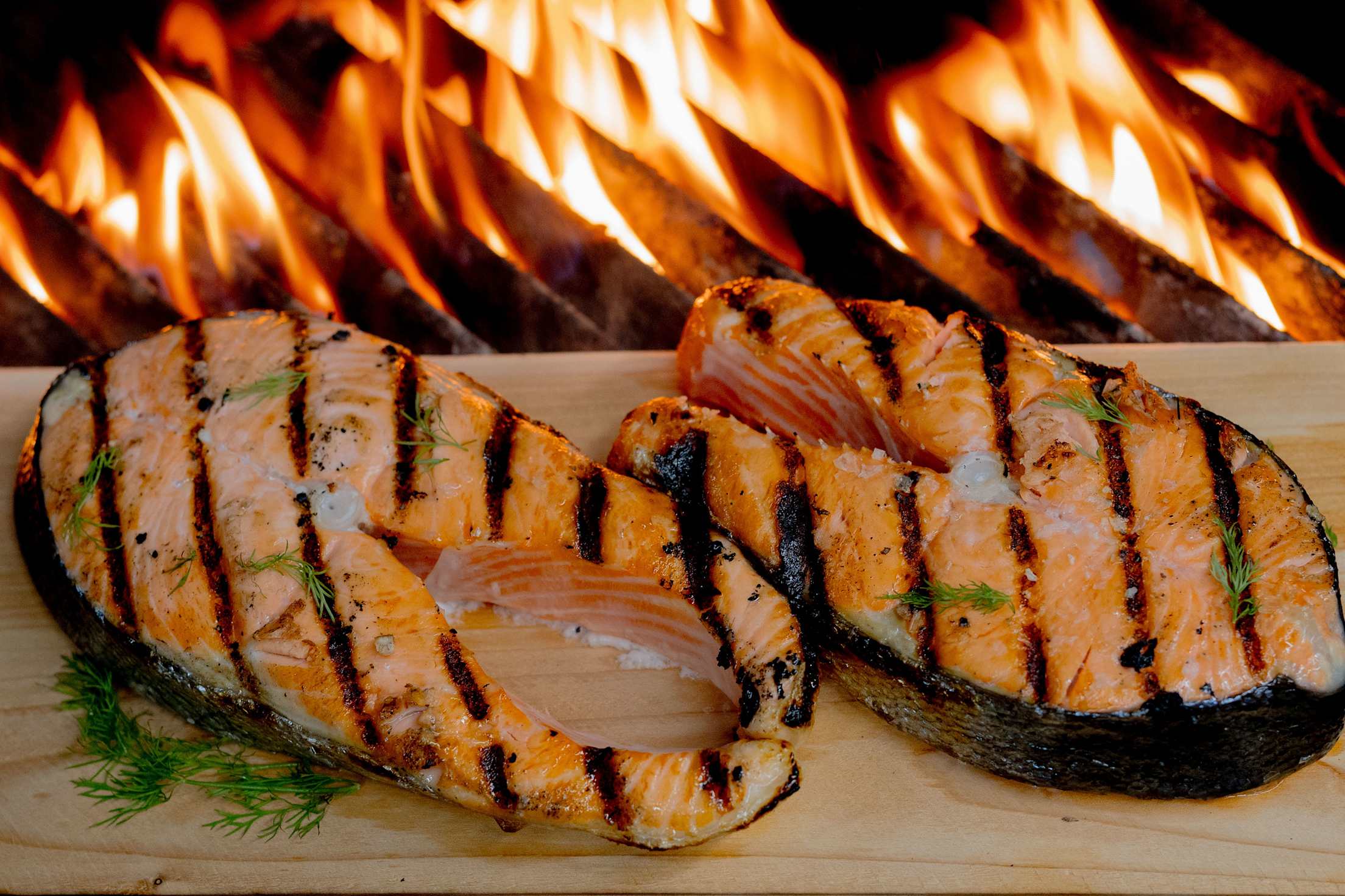
Salmon Grilled on Cedar Planks, Alaska
Grilling on cedar planks, used often for salmon, was created by indigenous people in the Pacific Northwest, British Columbia, and Alaska thousands of years pre-contact, according to chef Rob Kinneen, an Alaska native of Tlingit heritage. “Most Alaskans have a spiritual connection to the salmon,” Kinneen adds.
When the salmon run up the rivers May through September near Sitka, Alaska, local chef Edith Johnson draws from her Tlingit heritage and grills the steaks on cedar planks at her restaurant Ludvig’s Bistro. Navajo on her other side, Johnson also sometimes grills (and talks) salmon for cruise ship tourists at the Sitka Sound Science Center. “For 10,000 years, salmon supported a long family line—us,” says Johnson. “We use all the fish, eating it, smoking it, making stock from it, even sometimes burying the heads to ferment. That expression is right: you are what you eat.” Johnson also features cioppino (below) on the menu, hers starring Bering Sea–sourced king crab.
Shrimp Cocktail, Nevada
In the 2001 heist film Ocean’s Eleven, Brad Pitt’s character noshes on a shrimp cocktail as he cases the casino he and his collaborators plan to rob. The quintessential Las Vegas appetizer debuted in 1959 at the Golden Gate Hotel and Casino, owned by a consortium of mainly Italian Americans out of San Francisco. They put one of their own, Italo Ghelfi, in charge, and—missing the fresh seafood he could find at his hometown’s Fisherman’s Wharf—he brought shrimp to the desert.
The appetizer features the tail-on shrimp hanging precariously from a tall, tulip-shaped sundae glass with a wedge of lemon impaled on the edge and, within, a tangy cocktail sauce that had long been paired with oysters (usually ketchup, horseradish, and Tabasco). Priced at 50 cents, the dish proved to be a draw for the casino, with some 25 million reportedly sold by 1991. A sister casino to the Golden Gate, the recently opened Circa, has been offering the appetizer for 99 cents (when paired with a full-priced entree) at its deli Saginaw’s.
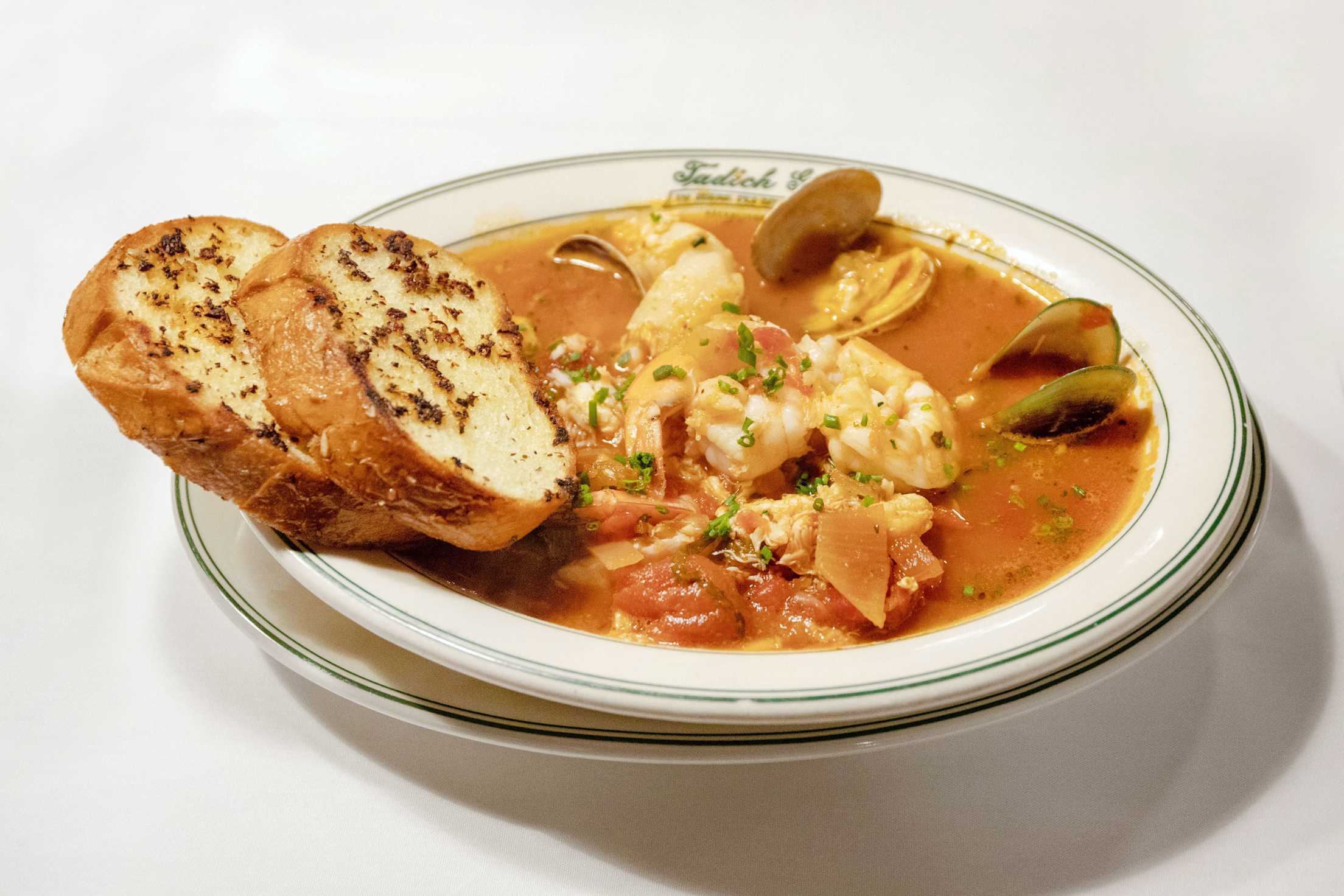
Cioppino, California
A waiter at San Francisco’s oldest restaurant, Tadich Grill, Brian Stroul, provides a common but probably apocryphal explanation for the origin of the city’s renowned seafood stew, cioppino. “If you were a fisherman and you didn’t catch anything, you took your big pot around, and your friends would chip in chopped bits of fish. Some tomatoes, some herbs, some broth, presto, cioppino.” A more likely, but less vivid story, according to Erica J. Peters’ book San Francisco: A Food Biography: Many of San Francisco’s early immigrants came from Liguria, Italy, where the name of a soup, ciuppin, came from a slang term for torn to pieces or chopped up.
Tadich’s excellent take on the 19th-century creation has a mix of seafood sourced daily—fresh mussels, clams, scallops, and grouper on a recent visit. Another San Francisco specialty, sourdough bread, can be ordered to mop up whatever remains of the tangy, anise-accented tomato-wine broth. Bibs are provided to block the splatter.
Funeral Potatoes, Utah
This cheesy, crispy potato dish is such a part of Utah’s culinary culture that the 2002 Salt Lake City Winter Olympics produced a commemorative pin to celebrate it. Recipes for this casserole turn up in early 20th-century cookbooks produced by the Church of Jesus Christ of Latter-day Saints charities. As the name suggests, it’s believed this hot dish was baked to comfort the grieving—a mix of potatoes, cheese, and creamy soup under a crispy topping (often crushed cornflakes, but panko and pulverized potato chips have their advocates).
Salt Lake City chef Eric Westover offers his canonical version of funeral potatoes as a side at Huckleberry Grill, a new restaurant that grew out of his longtime food truck. “Though I’m Mormon, of pioneer heritage, I grew up in California and didn’t have them until moving here at age 13,” he says. “My wife’s family introduced me to them. I wasn’t sure, but at the truck, they were an immediate hit.”
Local food writer Darby Doyle enjoys an irreverent take from Salt Lake City’s Garage on Beck: A pop-in-the-mouth ball of cheesy potatoes in a coating crisped through deep-frying.
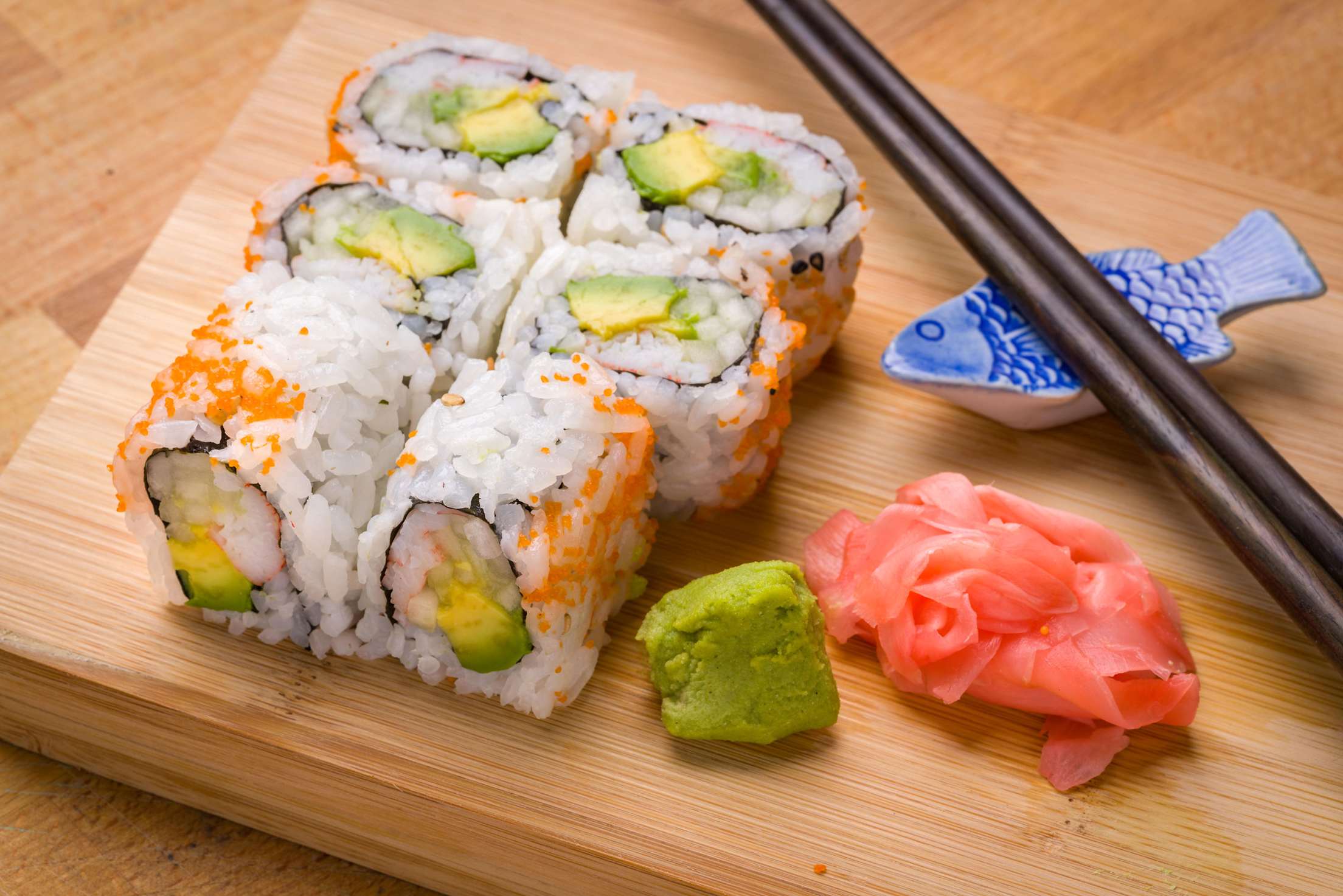
California Roll, California
Japanese American chef Ichiro Mashita is widely credited with introducing the California roll in the 1960s at Tokyo Kaikan, a Los Angeles restaurant with a celebrity-studded clientele. When he saw diners new to Japanese food peeling off the wrap of nori, or dried seaweed, that encased many rolls, he reportedly decided to put the rice on the outside. Inside were then-innovative fillings: a bit of the avocado that was readily available in Southern California, crunchy cucumber, and artificial crab—though early versions may have featured the real thing.
Now that Tokyo Kaikan has closed, the next best thing is the California Roll at Sushi Gen, located in a strip mall at the edge of L.A.’s Little Tokyo. Chef and owner Toshiaki Toyoshima trained at Tokyo Kaikan before opening his own place. Folks are known to line up before it opens to score reasonably priced sushi, so go early.
Sopaipilla, New Mexico
Enrique Salmón grew up eating his mother’s traditional fried-dough snacks, sopaipillas. Now a professor of ethnic studies at California State University East Bay, Salmón tracks the quick bread’s long journey. “The Moors brought it to the Iberian Peninsula. Then, it was taken by the Spanish over the Atlantic to the Americas. You find it outside the Rio Grande region, but a specific version has remained strong in New Mexico.”
The pillow-shaped breads are often doused in honey or sugar and eaten as a standalone snack or for dessert. They can serve as an entree, stuffed with savory meats, spiced ground beef or chicken, and topped with chiles and cheese. For Salmón, a sweet sopaipilla can take him back. “It generates comfort; it tastes like home.”
Opened in Albuquerque in 1962 as a drive-in, Monroe’s New Mexican Food is now a casual, sit-down restaurant that offers the sweet and savory varieties in two locations. Named for its first proprietor, Scandinavian American Monroe Sorensen, it was purchased in 1979 by Miguel Diaz, and purists have praised its careful renditions of regional specialties.
Members save using AAA’s restaurant discounts.